Being one of the imperial gardens of China, The Summer Palace in Beijing is a beauty to behold, with stunning views alongside a famously rich history. Currently, it is considered a UNESCO World Heritage Site. In this article, we will explore the diverse portions of the architectural landscape, meticulously structured pavilions, calm lakes, and gardens comprising this serene site. From its origins during the Qing dynasty to its current roles as a celebration of culture, this site unravels secrets and stories of emperors who once strolled across the grounds. I will discuss useful tips for arriving at the site, the best times to appreciate the diversity of nature and times to pay tribute to the majestic sites during your visit. Moreover, With the aid of this article, you will know how the site is a cultural treasure and a must-see attraction of the world with fine details.
What is the history of the Summer Palace?
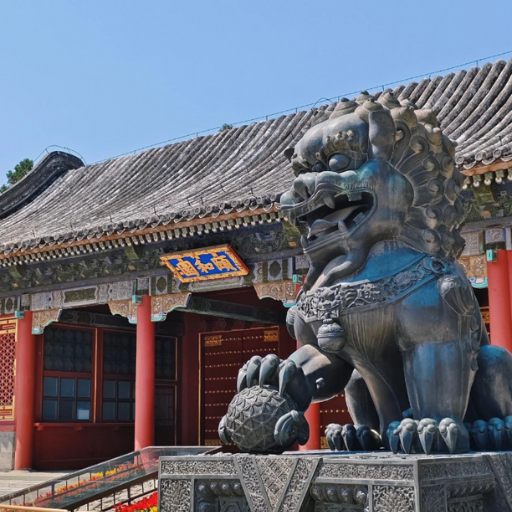
What is the history of the Summer Palace
The splendid component of a royal family garden known as the Summer Palace started its construction in 1750 and the stunning addon was added during the reign of the Qianlong Emperor in the mid-18th century of the Qing dynasty. In his father’s honor, the garden was coined “Garden of Clear Ripples”, and served as a celebratory retreat. Despite serving as an imperial retreat and wonder, the Summer Palace did suffer a degrading phase when it was partially demolished during the Second Opium War and later at the Boxer Rebellion. In 1886, Empress Dowager Cixi gave grants sealed for military use to support the renovation of the palace which was later relocated to navy docks and transformed the ruins into her retreat. Currently, the Summer Palace claims its place amongst the top historical monuments in China due to its combination of natural resources of great beauty, and costly and complicated structures while simultaneously remaining a UNESCO World Heritage Site.
When was the Summer Palace built?
The lavish royal garden, Summer Palace, began its monument and legacy around the mid-18th century, and owing to the grace of the Qianlong Emperor, it was fortified and perfected in 1750 during the Qing dynasty, making it a defining symbol of Chinese landscape aesthetics. The palace was altered and refashioned into an epitome of traditional Chinese nature and values.
How did the Opium War affect the Summer Palace?
The Opium War had little influence on the Summer Palace; however, its consequences later gave rise to one more conflict that would destroy it. Anglo-French troops set fire to and pillaged the Old Summer Palace (Yuanmingyuan) which was close to the Summer Palace during the second Opium War of 1860. While the Summer Palace (Yiheyuan) was not destroyed during that time, it was in a state of decline and disrepair caused by the shift of attention elsewhere due to the commotion of politics and war. These all events made it soberingly clear how easily the sites of cultural heritage could be destroyed during wars.
What part did Empress Dowager Cixi play in the palace’s history?
As the Empress Dowager, I was important to the rehabilitation and reconstruction of the Summer Palace (Yiheyuan). After all the neglect and damage done by the prior conflicts, I devoted heavy expenditure to the rebuilding of the palace, funds that some believed were wasted on the navy. I constructed the palace as a place to escape from the world, and within it to showcase imperial power. To achieve my vision, I made sure that it was developed into the greatest example of Chinese garden architecture. My most cherished summer residence, the Summer Palace at Yiheyuan, served as a symbol of my identity and style.
What are the main attractions in the Summer Palace?
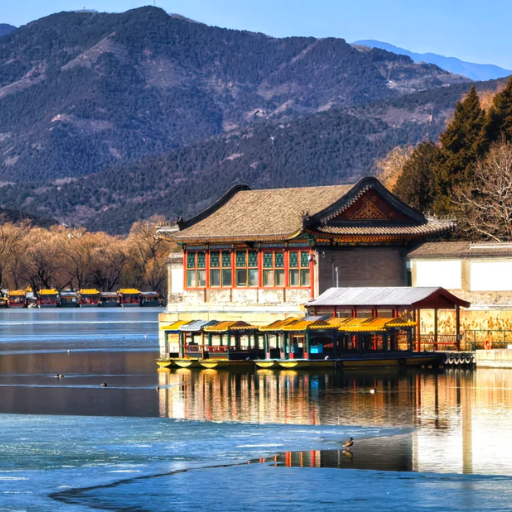
What are the main attractions in the Summer Palace
Highlights of the summer palace are Longevity Hill and Kunming Lake which form the centerpiece of its landscape. Important highlights include the majestic architectural marvel, the Seventeen-Arch Bridge which connects the shore to Nanhu Island, and the Marble Boat, which represents the strength of the Qing dynasty. The Long Corridor serving as an additional painted sculpture gallery provides wonderful vistas, the Tower of Buddhist Incense in contrast serves as a viewpoint while the Garden of Virtue and Harmony serves as the Imperial Bathing Pavilion. Each of these is a marvel of China and is associated with some important event in history.
Exploring Kunming Lake: The Heart of the Summer Palace
While taking a vacation in the summertime, I had the chance to visit the beautiful Kunming Lake, a vast and calm water collection that makes up three-fourths of the Summer Palace. Kunming Lake was built using human effort, just like Longevity Hill, which was built by digging into the soil. The view witnessed during the boat rides across the lake is picturesque, dotted with landmarks like South Lake Island and the Seventeen-Arch Bridge. Apart from capturing nature’s beauty, the lake was designed as an imperial landscaping wonder and a powerfully sophisticated water disposal system. It is an exceptional and marvelous feature of ancient China.
Climbing Longevity Hill: Panoramic views and cultural significance
Those who venture to Longevity Hill will revel in its stunning panoramic views blended with its deep-rooted cultural heritage. This hill stands over 60 meters tall, allowing visitors to see the splendid view of Kunming Lake and its blend of calm waters and breathtaking buildings. The centerpiece of the hill is the Tower of Buddhist Incense, a magnificent structure that signifies prayer and serves as a symbol for the rich history of the Qing Dynasty. The rest of the hill is filled with pavilions, halls, and covered ways, every single one of these beautifully crafted with carvings and paintings in traditional Chinese fashion displaying pieces of art and folklore. Besides its stunning appearance, Longevity Hill is a cultural icon for being a place of deep contemplation and imperial power, holding within it centuries of Chinese art, religion, and philosophy.
Walking the Long Corridor: A masterpiece of traditional Chinese architecture
Located at the Summer Palace in Beijing, the Long Corridor is one of the best examples of traditional Chinese architecture and artistry. It is over 700 meters long, which makes it the longest-covered walkway in the world. It was built to enable the imperial family to visit the gardens without being affected by the weather conditions. Through the beams and panels of the corridor, one can see the legends, historical events, and natural landscapes that are intricately painted on them which showcases the deep culture China carries. Strolling through the Long Corridor is like going through a living exhibition of art, history, and architecture all in one, which makes it a rare gem from the Qing dynasty and a must-visit place for tourists.
How does the Summer Palace showcase Chinese landscape garden design?
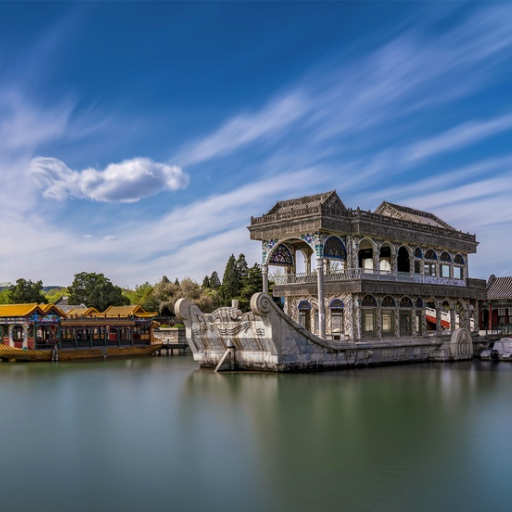
How does the Summer Palace showcase Chinese landscape garden design
The Summer Palace best represents aesthetic values held by the Chinese when it comes to blending architecture with the surroundings. It seamlessly combines hills, open water, pavilions, bridges, and promenades within a soothing and peaceful setting. The design balances symmetry and nature with buildings while keeping the surrounding environment in mind. The placement of buildings, including trees and water, is done in such a way that promotes quiet introspection while being surrounded by a designed landscape filled with nature’s natural beauty.
Understanding the integration of natural landscapes and artificial features
Merging natural landscapes with man-made features is a task of balancing structures around the environment with the nature present. In my understanding, such features include water ponds, flowers, trees, pathways, as well as buildings whose colors and designs match the landscape. Fountains, greenery, roads, and other elements can easily change the mood of the environment, from feeling balanced to peaceful. The desired outcome for such a challenging task is reaching as much beauty and peace as possible by skillfully combining functionality with nature.
Comparing the Summer Palace to other famous Chinese gardens like Suzhou
The Summer Palace, resembling the famed Suzhou gardens, is beautifully artistic and tied to nature, but differs when it comes to scale and intention. The Summer Palace, which is vast and was meant to be an imperial leisure palace, combined large landscapes with beautiful temples and lavish decorations that heavily focused on relaxation. Conversely, the Suzhou Gardens pay attention to detail with intimate spaces such as the Master of the Nets Garden which embody small-scale equilibrium and harmony. Both are awe-inspiring, however, the Summer Palace is stunning with its scale, while the Suzhou Gardens are delightful with their understated poetry.
What makes the Summer Palace a UNESCO World Heritage Site?
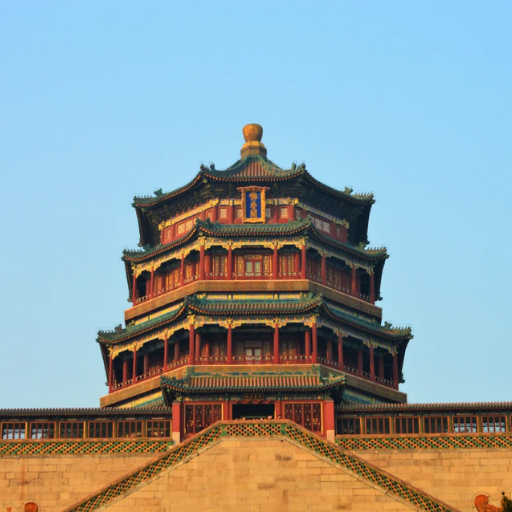
What makes the Summer Palace a UNESCO World Heritage Site
Due to its importance and exceptional features that incorporate natural beauty, Summer Palace has been recognized as a UNESCO World Heritage Site. It demonstrates the outstanding achievements of art and architecture by showcasing creativity in integrating both scenery and structures. In addition, it serves as a symbol of Chinese imperial culture which reflects centuries of Chinese history, innovation, artistic sophistication, and technical refinement. This blend of natural magnificence alongside the cultural and historic significance constructs a treasure.
Cultural and historical significance of the palace complex
In my opinion, the cultural and historical significance of the palace complex is deep and complex simultaneously. The palace is a representation of the peak of Chinese imperial power due to its blend of distinct architecture with metaphoric features that depict the philosophy and cosmology of China. It served as the political and ceremonial of many dynasties portraying power prestige and artistic skill. The delicate featured artwork preserved intricate layout, and historical legacy speaks of the powerful essence of the civilization of ancient Chinese. This UNESCO World Heritage Site offers people of future generations an opportunity to learn and appreciate their roots.
How does the Summer Palace represent Chinese imperial life?
Chinese Imperial life is beautifully showcased in the architecture, landscape, and nature’s integration within The Summer Palace. The lavish gardens and exquisite buildings are a must-visit for every ruler’s childhood dreams were built there. The Summer Palace served as an imperial retreat for the empires to escape to and embodied philosophical principles such as harmony and balance. The lake occupies 2.2km square kilometers while Longevity Hill covers the rest. The Kunming Lake and the Longevity Hill both help the Summer Palace to cover a large area of 3.9 km. In addition to that, the Palaces design follows feng shui. Therefore water features, buildings, and other structures are carefully set in place to give that soft commanding feel.
When is the best time to visit the Summer Palace?
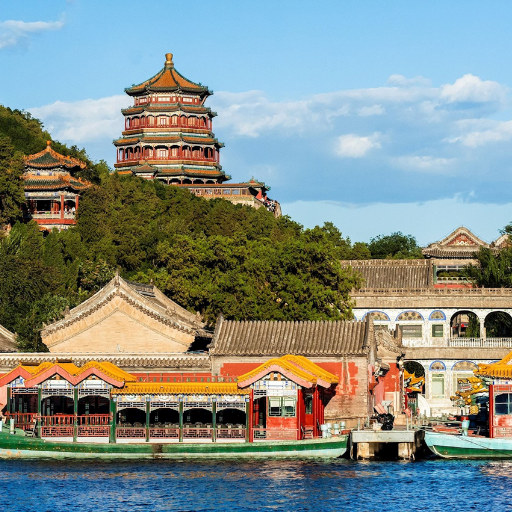
When is the best time to visit the Summer Palace
The palace is best visited during spring (March to May) and autumn (September to November), with spring flowers and autumn colors enhancing the beauty of the palace. These seasons also have comfortable temperatures which add to the convenience of exploring the vast grounds.
Seasonal highlights and events at the Summer Palace
From my perspective, spring at the palace is uniquely beautiful, with the gardens in full bloom, cherry blossoms being my favorite, making it a picturesque location to take walks and pictures. Autumn presents its kind of beauty around the palace, as the golden and red foliage are breathtaking alongside the lakeside views. Summer offers cultural experiences with traditional Chinese music and boat rides on Kunming Lake during the Northern summer months. Winter covers the palace in snow, with the lake occasionally frozen and snow enhancing the tranquility of the area.
Tips for avoiding crowds and making the most of your visit
To steer clear of large crowds, especially on the weekends or during public holidays, I suggest arriving early in the morning or later in the afternoon. By purchasing tickets online, you’ll save not only time but headaches from unforeseen circumstances as well. When you’re at the Summer Palace, consider starting at the less popular eastern entrance instead of the eastern entrances and move towards Longevity Hill and Kunming Lake. For those wanting a more peaceful experience, aim for weekdays and shy away from the heavily trafficked areas as well, as those tend to become more central. Finally, taking some time to walk around and explore underrated areas such as Suzhou Street will provide a more authentic experience.
References
Frequently Asked Questions (FAQ)
Q: What is the history of the Summer Palace in Beijing?
A: The Summer Palace, originally known as Qingyi Garden, was first built in 1750 during the Qing Dynasty. Emperor Qianlong expanded it into a large-scale imperial garden, completed in 1764. In 1860, it was damaged during the Second Opium War and later rebuilt by Empress Dowager Cixi in 1888. The palace became a public park in 1924 after the fall of the Qing Dynasty.
Q: What are the main attractions at the Beijing Summer Palace?
A: The Summer Palace features several notable attractions, including Longevity Hill and Kunming Lake, the Tower of Buddhist Incense, the Hall of Benevolence and Longevity, the Marble Boat, and the Garden of Harmonious Interests. These elements combine to create a masterpiece of Chinese landscape garden design.
Q: How does the Summer Palace compare to the Old Summer Palace?
A: While both are historic imperial gardens in Beijing, the Summer Palace is better preserved and open to the public. The Old Summer Palace, also known as Yuanmingyuan, was largely destroyed in 1860 and exists mostly as ruins. The Summer Palace, on the other hand, was rebuilt and remains a popular tourist destination.
Q: What is the significance of Kunming Lake at the Summer Palace?
A: Kunming Lake covers about three-quarters of the Summer Palace grounds and is an essential part of its landscape design. It features islands, bridges, and boats, creating beautiful scenery known as “Clear Ripples”. The lake also played a practical role in water conservation and transportation for the imperial family.
Q: What is the Garden of Harmonious Interests?
A: The Garden of Harmonious Interests is a smaller garden within the Summer Palace complex. It’s considered one of the most exquisite gardens in the palace, featuring delicate pavilions, winding corridors, and a central pond. This garden exemplifies the artistry of traditional Chinese garden design.
Q: How was the Summer Palace affected by historical events?
A: The Summer Palace faced significant damage during two major historical events. In 1860, it was looted and burned by Anglo-French forces during the Second Opium War. Later, in 1900, it was damaged again during the Boxer Rebellion. Despite these setbacks, the palace was rebuilt and restored, eventually becoming a UNESCO World Heritage site in 1998.
Q: When did the Summer Palace open to the public?
A: The Summer Palace was opened to the public in 1924, after the fall of the Qing Dynasty and the establishment of the Republic of China. Since then, it has been managed as a public park, first by the Beijing Municipal Government and later by the People’s Republic of China, allowing visitors to enjoy its beauty and historical significance.